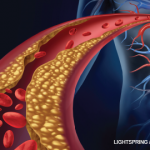 Rheumatologists and geriatricians share many things in common. At heart, they are internists. Their numbers are few compared with their patient populations. They are trained to work in combination with care teams, and as 75 million baby boomers move into their later years, rheumatologists and geriatricians likely will be sharing a lot more patients.1 During interviews with The Rheumatologist, three clinicians identified a number of areas in which rheumatologists and geriatricians can improve treatment for these patients and discussed the partnership between specialties.
Rheumatologists and geriatricians share many things in common. At heart, they are internists. Their numbers are few compared with their patient populations. They are trained to work in combination with care teams, and as 75 million baby boomers move into their later years, rheumatologists and geriatricians likely will be sharing a lot more patients.1 During interviews with The Rheumatologist, three clinicians identified a number of areas in which rheumatologists and geriatricians can improve treatment for these patients and discussed the partnership between specialties.
The most common area of concern among rheumatologists is choice of medications for geriatric patients seeking relief from joint pain. Many primary care physicians, including geriatricians, are insufficiently dosing Tylenol or are “scared to use NSAIDs [non-steroidal anti-inflammatory drugs],” according to Shailendra Singh, MBBS, director of rheumatology at White River Medical Center in Batesville, Ark.
“[Acetaminophen] should be the first choice. It is [conditionally] recommended by the American College of Rheumatology [ACR], and it should be taken at the appropriate dose,” he says. “A lot of people say they are taking Tylenol, but they are taking an inadequate dose. It doesn’t help if they aren’t taking the right dose. Tylenol 325 mg—the most common over-the-counter dose—has antipyretic properties, but not analgesic [properties]. Tylenol arthritis or regular Tylenol at 650 mg or more provides an adequate analgesic effect. The total dose should not exceed 4 g [with in a 24-hour period], as long as there is no contraindication for Tylenol use.”2
Dr. Singh, who is board eligible in geriatric medicine, also encourages the use of NSAIDs as front-line therapy, even combining Tylenol and NSAIDs for pain control. He says both treatments are underused in elderly populations due to concerns of gastrointestinal bleed and kidney problems.3
“As long as their kidney function is normal, NSAIDs can be used,” he says. “Patients should stay well hydrated and never take the medication on an empty stomach. … Combining Tylenol arthritis with NSAIDs has really wonderful results, and with this combination, we can prevent the use of narcotics.”
Immunosuppressants tend to raise red flags in elderly patients, says Erin M. Bauer, MD, a rheumatologist at Virginia Mason Medical Center in Seattle. She also says geriatricians should not be afraid of or caution patients against these treatments.
“All of the more recent data show that the risks are probably not as bad as we used to think they were—especially in terms of the cancer risks,” she says. “The infectious risks are certainly there, but I think that they get a little blown out of proportion. … We have really great medicines. Although they do have some serious risks and side effects, they can really change a person’s quality of life.”
Dr. Singh says clinicians need to be cautious with dosages in elderly populations. He suggests adjusting the dose according to kidney and liver function.
“What is appropriate for an adult is a high dose for elderly persons,” he explains. “That is a most important take-home point for geriatricians. For example, young people we start out with 15 mg methotrexate. But for people who are 75 and older, start them on 5 or 7.5 mg.”
Other Causes of Pain
Not all joint pain in older adults is due to osteoarthritis, says Elana J. Bernstein, MD, MSc, assistant professor of medicine at Columbia University College of Physicians and Surgeons. Two rheumatic diseases geriatricians should have on their radar: polymyalgia rheumatica (PMR) and giant cell arteritis (GCA).
“In particular, if a patient reports joint pain, it is important to ask about the location of the pain and whether it’s associated with any joint swelling or morning stiffness. For example, if the pain is primarily located in the shoulders and/or the hip girdle, that should raise suspicion for PMR or GCA,” says Dr. Bernstein, who is the program director of the Columbia University Medical Center/New York Presbyterian Scleroderma Program. “PMR and GCA are diagnoses that can be missed. … That is why it is important for geriatricians to have a close referral relationship with a rheumatologist they trust. If there are ever any questions, just pick up the phone.”
Dr. Bernstein notes rheumatoid arthritis and systemic lupus erythematosus can also initially present in older adults. Dr. Singh concurs, explaining that with elderly patients, typical lab results often don’t tell the whole story.
“Every elevated ESR is not due to rheumatoid arthritis,” he says. “ANA [anti-nuclear antibody] testing should not be done as a routine treatment. It should only be done in people who have symptoms that point toward lupus. ANA panels for joint pain are not appropriate.”
With regard to PMR diagnoses, Dr. Singh advises physicians to avoid high-dose steroids. He says preferred treatment should actually be low-dose corticosteroids for 12–18 months.
Collaboration
Communication between specialists is vital to the geriatric patient. Whether it is a note from the geriatrician alerting the rheumatologist of a referral or a rheumatologist changing medications, open lines of communication typically equate to improved patient care.
“If a geriatrician, or any other physician, wants to stop a medication that the rheumatologist has prescribed, please speak with the rheumatologist first,” Dr. Bernstein says. “For example, gout affects many elderly individuals, and a lot of these people are on urate-lowering therapy, such as allopurinol. Sometimes, the allopurinol is stopped without asking the rheumatologist—this seems to happen more often when patients are hospitalized—and when allopurinol is stopped, the patient can develop a gout flare.”
Communication also extends to geriatric patients. Dr. Singh says clear instructions and trust between patient and rheumatologist are key. One of his patients developed fatigue, called his primary care provider, and due to some memory problems, did not indicate he was taking methotrexate. The patient was referred to cardiology and underwent a cardiac catheterization procedure.
“Talking to the rheumatologist could prevent a lot of harm to the patient. Fatigue could be a side effect of any medication,” Dr. Singh says. “Proper communication between the rheumatologist and the geriatrician or primary care [provider] can avoid unnecessary interventions, improve patient safety and reduce the cost of care. Sometimes, we forget to take a step back, look at the patient as a whole and think about what else could be wrong.”
Dr. Bauer, who is co-founder of the Young Rheumatologists Association, says it is always exciting to work with primary care providers and geriatricians who know their patients well.
“They are on the lookout for complications from medications, and the patient really trusts them,” she says, adding that rheumatologists should build on those relationships. “Patients don’t always understand what rheumatology really is and very often show up very scared and confused.”
Dr. Singh agrees and considers his partnerships with geriatricians essential.
“Rheumatologists are team players. We need to talk to primary care, geriatrics and the specialists,” he says. “We need to work in combination with the care team to improve patient care.”
Richard Quinn is a freelance writer in New Jersey.
References
- Staff. American generation fast facts. CNN. 2016 Oct 20.
- Hochberg M, Altman R, April KT, et al. American College of Rheumatology 2012 recommendations for the use of nonpharmacologic and pharmacologic therapies in osteoarthritis of the hand, hip, and knee. Arthritis Care Res (Hoboken). 2012 Apr;64(4):465–474. DOI 10.1002/acr.21596.
- Rahme E, Bernatsky S. NSAIDs and risk of lower gastrointestinal bleeding. Lancet. 2010 Jun 10;376(9736):146–148.



